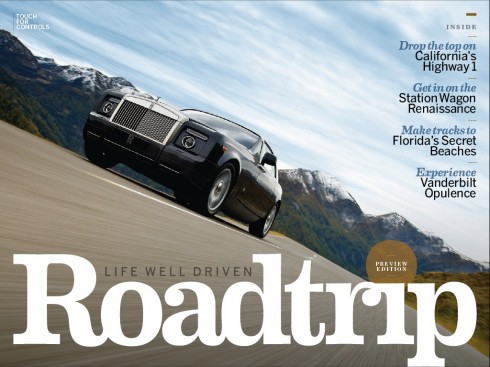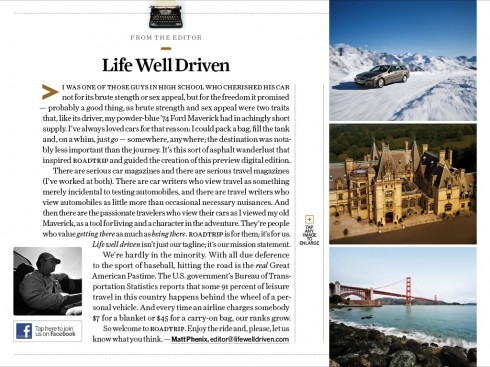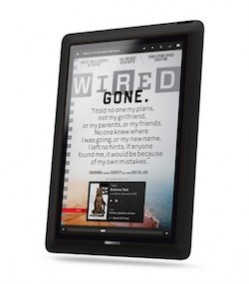TAKEAWAY: It’s a shame they didn’t have such a course when I started writing this blog, but it is never too late to learn a few tricks about blogging.
Here I was going through my choice of “just for me” articles in Zite when along I run into a headline that reads: Blogging 101: Syracuse University Offers Blog Writing Course.
Immediately, two items caught my interest: Blogging, of course, and Syracuse University, a very dear place to me where I taught for 8 years at the S.I. Newhouse School of Public Communications.
Indeed, at SU this summer a successful blogger named Sean Keeley is going to teach what may be the University’s first ever course on blogging. Keeley is the editor of a sports blog which he claims has, on average, 400,000 page views and 250000 visitors per month.
Not bad. I wish I had learned about this course earlier to try to squeeze it into my schedule. But, for now, I read highlights of the course with interest:
—I have learned that I can call myself an “independent blogger”, thank you!
—Keeley says that before bloggers cash in, they “must have a following”. Nothing new here!
—“it is all about content, content, content”. Amen.
—“Write as much as you can, as often as you can……”. Well, we try, and sometimes it is not easy to squeeze the blogging exercise in the midst of the rest, but if there is a will, there is a way (most of the time).
—“The ability to create such constant content has to come from passion and interest in the topic….”
And the best quote from Prof. Keeley:
—“It has to be something where every morning you wake up and you’re excited to write about it.”
Keeley also reminds his students to “be yourself. Readers are savvy, if you’re not funny, you shouldn’t try and be funny. Use a genuine voice.”
For those interested: The class will be held at Syracuse University’s Maymester, and will meet from 9 am to 5 pm, May 16-20.
Of course, I am sure that there will be several daily blogs coming out of Keeley’s class, wouldn’t you guess?
My own tips for bloggers
After writing 761 of these posts, I have learned that one cannot be profound and clever every single day, and that one must write about that which is in one’s mind as the day begins. It is more like spontaneous meditation.
The blogger must think in terms of an audience of one, not hundreds or thousands. It is as if I take my cup of coffee to the back of my house and chat with my neighbor Ken across the fence. As simple as that. The moment one begins to think he is writing a book or an essay, somehow the tone of the blog changes, as does one’s sense of responsibility and self editing.
There is little self editing or deep meditation for the daily blogger. It is more like shooting from the hip (or from both of them simultaneously some days).
Blogging offers an individual the opportunity to be publisher, editor, reporter, art director, designer and videographer, without any of the dramas and intricacies that bringing all those characters into the same room usually create.
And, for me,one of the biggest mysteries of blogging is the fact that one never knows which topic will generate the greatest reactions, the largest traffic or the most deafening silence. But one never has much time to meditate on these phenomena, since there is always tomorrow’s blog to think about.
Today’s pop up

Germany’s Bild plays with this pop up where the style of the purse or bag a woman carries determines her personality
TheMarioBlog post #761
The iPad: show me the money time
TAKEAWAY: In a bold move, Time Inc. announces a package subscription deal for its print subscribers, who will get the iPad for free. Is that good? Does it set a precedent? Should the word FREE be ever attached to a news iPad app beyond the usual launch period? AND: Redesign American newspapers, writes a UK based journalist.
Buy print, get app free!

In this blog yesterday, I mentioned that “perhaps part of being an innovator at this early stage in the development of iPad apps is NOT just in the creation of the app itself, but how one markets it. For a medium in its infancy, a combination of great storytelling, a variety of pop up moments and reasonable pricing are the key.”
How appropriate, then, to read the announcement that Time Inc. negotiated an agreement with Apple in which subscribers to Sports Illustrated, Time and Fortune would be able to read their magazines on the iPad free as long as they verified their identity. TIME magazine was the first newsweekly to appear as an app the day the first iPad came out.
Although I personally don’t like the precedent of giving away the iPad edition for free (even a nominal add on to the print subscription would be more desireable), I think this move by TIME paves the way for a different, more auspicious reality for the marketing of news iPad apps while this platform is still in its infancy.
Counting those digital subscribers: hot topic
This may be related to the subject of how to price advertising in the tablets, which The New York Times has addressed rather specifically in a recent article. In that piece, an important subject surfaces, and that is how to count “circulation” of digital editions in terms of numbers that can be passed on to prospective advertisers. In March the Audit Bureau of Circulations announced that each digital subscriptions will count toward the number of copies used to sell advertising — even if the electronic version is not precisely identical to the print edition. Indeed, a good move on the part of the ABC and its regulators.This is probably what has prompted TIME to announce their new package deal for subscribers, and a move that I believe other magazine and newspaper publishers will watch closely in the weeks ahead.
But will that work for everyone in every situation? Will a digital subscriber (user) count the same as a print one for those who sell advertising?
Not so, said Robin Steinberg, executive vice president and director of publishing investment and activation for MediaVest. In that NYT piece Steinberg, who helps giants like Kraft and Wal-Mart make ad-buying decisions, said she has sent a pre-emptive letter to publishers on April 29 suggesting that she and her clients would not simply go along with the assumption that a digital subscriber should count the same as a paper one.
Let the debate begin! Should a digital user reading a newsmagazine or newspaper on his iPad be considered less of a reader than one who reads it on paper?
Nonsense, I say.
But this will also bring us to the subject of how advertising is presented on the iPad, a subject that we discuss here often. Advertising can have a more dynamic and influential presence if handled properly for the tablet, and even Ms. Steinberg recognized such in the NYT piece: She suggested that simply replicating the existing print ads and editorial experience in pixels represented a failure of imagination and adaptation. “Delivering the right creative experience is key. Consumers demand and expect something very different from these devices,” she added
The view from Terry Snow, CEO, Bonnier Group
Yesterday in this blog we profiled Bonnier, which was named publishing innovator of the year for the diversity of its media offerings.
I asked Bonnier Group CEO Terry Snow to give us his views on digital publishing and, specifically, their work and plans with tablets:
We are very bullish on the tablet as a new reading device. The forecast for growth has exceeded everyone’s initial projections and even revised projections. We think the user facing experience is very much in it’s infancy. The replica magazine that the industry is pursuing seems to be a very temporary approach – one that consumers and advertisers will easily adopt. I think much of this driven by editors that think design drives the experience and advertisers that understand what a magazine looks like.
However, we think the model will soon evolve into a mix of curated, aggregated, real time, and customized content. All presented in a nice design, but a dynamic product that would be updated every time you opened it. I think apps like Flipboard and Zite are just scratching the surface. And soon we will see new iterations of their concept that will be more magazine like. Who knows, maybe Bonnier will introduce this next generation. (:
We also see single topic apps, book apps, and utility apps all becoming outgrowths from magazine brands. It’s a very exciting time.
The view from Joe Zeff
Friend and colleague Joe Zeff, whose work in the creation of iPad apps is among the most innovative in the industry, had this to say in an email to me:
Subscriptions and reduced prices will help the magazine industry sell more digital editions, which will satisfy more advertisers and build larger audiences. I’m hoping that new pricing models will result in new content models as well. There are enormous opportunities for publishers to supplement revenues from magazine replicas by creating new products that leverage the strengths of the iPad platform.
Meanwhile, I’m disappointed by Time Inc.’s decision to give away its iPad editions to print subscribers. It seems short-sighted to present consumers with the lopsided proposition that printed content costs money and digital content does not. All of a sudden, we find ourselves returned to a world that the iPad was supposed to change, a world in which consumers won’t pay for online content. A bundled price that attributed value to print and digital, even if it meant surrendering a portion of the revenue to Apple, would have provided Time Inc. with much more flexibility going forward.
In fact, one of Joe’s most popular and dynamic app creations, The Final Hours, which we discussed in a recent blog, is now getting another splendid review. And that review includes a good discussion of how the tablet model clearly works for long form journalism, a subject that we will be discussing more thoroughly in the weeks ahead here.
Redesign all American newspapers?
Design consultants: read this. The drought of jobs for redesigning newspapers in the US may be coming to an end very soon, but don’t abandon your day jobs yet.
In a column headlined Hold the front page—it’s time US papers had a redesign, Peter Preston-, of Britain’s The Observer (sister newspaper of The Guardian) states that, with the exception of The Wall Street Journal, whose layout he describes as “crisp”, the others better be rushed to the design emergency room by ambulance, and not a moment too soon.
Here is how Preston sees those American broadsheets along the landscape:
Stand back on the pavement, take in the panorama, and something else registers. They all – from Lexington to Des Moines to Pueblo – look much the same. They’re ex-broadsheets in format with columns squeezed to save newsprint (from crunch to crunch). They’re mean, constricted, somehow shrivelling away. It’s as though they’d read Ken Doctor’s latest obituary and taken a turn for the worse.
As in all cases of generalizations, this column takes the issue of poor design in US newspapers to extremes. Although my work in the United States the past 36 months has been limited to The Washington Post——which he also criticizes extensively, by the way—-I am aware that there are some American newspapers which do not adhere to the “uniform”, and break out into their own unique styles. Think Virginian Pilot, Orlando Sentinel, Star Tribune (Minneapolis), St. Petersburg Times, Sun Sentinel (Ft. Lauderdale) and the Denver Post, among others.
Of interest today:
–Apple maintains dominance in Tablet Market
http://digitalmedia.strategyeye.com/article/XF48NcINj2/2011/05/09/apple_maintains_dominance_in_tablet_market/?nsl=5kgUhSWwxedW
Here is the first paragraph of this piece:
Apple is continuing to assert its dominance in the tablet space, with the iPad accounting for 82% of the US market, despite the launch of a number of devices based on Google’s Android operating system according to Nielsen. In a recent survey, the research firm says that the Wi-Fi version of the iPad accounts for 43% of the market, ahead of the 3G version on 39%. This puts the iPad a considerable distance ahead of its nearest competitor, Samsung’s Galaxy Tab, which comprised a paltry 4% of the market. The Motorola Xoom, the first tablet to launch with the tablet-optimised version of Android, holds just 2% market share in the US.
– WSJ: Our print edition has had 17 consecutive quarters of circulation revenue growth
http://www.poynter.org/latest-news/romenesko/131279/wsj-print-edition-has-had-17-consecutive-quarters-of-circulation-revenue-growth/
– USA: Online subscriptions exceed Tribune expectations
http://www.columbiatribune.com/news/2011/may/05/model-exceeds-columbia-daily-tribune-expectations/
– USA: The 5 must-knows about how readers navigate news online, drawn from new Pew study
http://www.poynter.org/latest-news/business-news/the-biz-blog/130981/the-5-must-knows-about-how-users-navigate-news-online/
– UK: Beyond the days of ink – look at the changing audience for newspapers
http://www.guardian.co.uk/media/greenslade/2011/may/09/digital-media-abcs
– What’s the ideal length for an online news article?
http://www.ojr.org/ojr/people/robert/201105/1972/
– USA: Now to Sell Advertisers on Tablets
http://www.nytimes.com/2011/05/09/business/media/09carr.html?partner=rss&emc=rss
TheMarioBlog post #769
Bonnier: innovator of the year
TAKEAWAY: Bonnier is the publishing innovator of the year for the diversity of its media offerings—-and banking on the tablet as it projects a total of 20 titles with iPad apps by year’s end.
Bonnier and iPad apps

Popular Science: Bonnier’s first mag on the iPad


Roadtrip is Bonnier’s made-for-the-tablet publication. App combines two subject areas—cars and travel—into one app.
We all remember the excitement when Popular Science magazine appeared with its iPad app edition. It had all those bells, whistles and, of course, pop ups that were the surprise that made users of that first iPad1 jump in their seats with excitement while saying: Wow, this is what the tablet is all about.
Then, of course, we saw , and continue to see a barrage of magazine apps that pop up on the cover and sort of fizzle once you start navigating. The explosive piñata is the cover, and, after that it is a party without champagne or mojitos.
So it is interesting to see that the Bonnier group, which publishes Popular Science, has been chosen as the 2011 Publishing Innovator of the Year. Well deserved. According to those who gave Bonnier the award:
Bonnier Corp. has been selected the disappointment with the success of their iPad mag apps, here is Bonnier announcing that the Swedish media company will bring to more than 20 the number of tablet launches by the end of the year.
For Conde Naste announced they are slowing a bit on their iPad editions, acknowledging that conditions aren’t quite right yet to deliver the ideal app editions at the kind of scale that advertisers want. Of course, it does not mean that they will not continue to develop iPad editions, but they will put the publications through a closer scrutiny before they create an iPad edition for it. As we know, Conde Naste, like Bonnier, has been an iPad editioning pioneer with such apps as Wired, GQ, Vanity Fair, The New Yorker and Glamour. Since then, Golf Digest, Self and Allure have followed.
But there is a chance Conde Naste is going to teach other app publishers a lesson, by offering a very special value for its app subscriptions. Only yesterday, the company announced it is close to a deal to begin selling its magazine issues on the iPad for $2 each and will offer yearly subscriptions for $20,
To me, here is the key: this is a new platform, and we know that users are willing to pay for that first edition to see how it works, then there is a sharp drop in the number of continue to buy that magazine after that first impulse and curiousity. With the right prices, I feel that the mag app subscriptions will do better. In fact, if media companies take a page from Apple itself, they will realize that the low price is a key to success.
Perhaps part of being an innovator at this early stage in the development of iPad apps is NOT just in the creation of the app itself, but how one markets it. For a medium in its infancy, a combination of great storytelling, a variety of pop up moments and reasonable pricing are the key.
Wired magazine iPad app: bells and whistles, a pop up a minute: Conde NasteTheMarioBlog post #768
